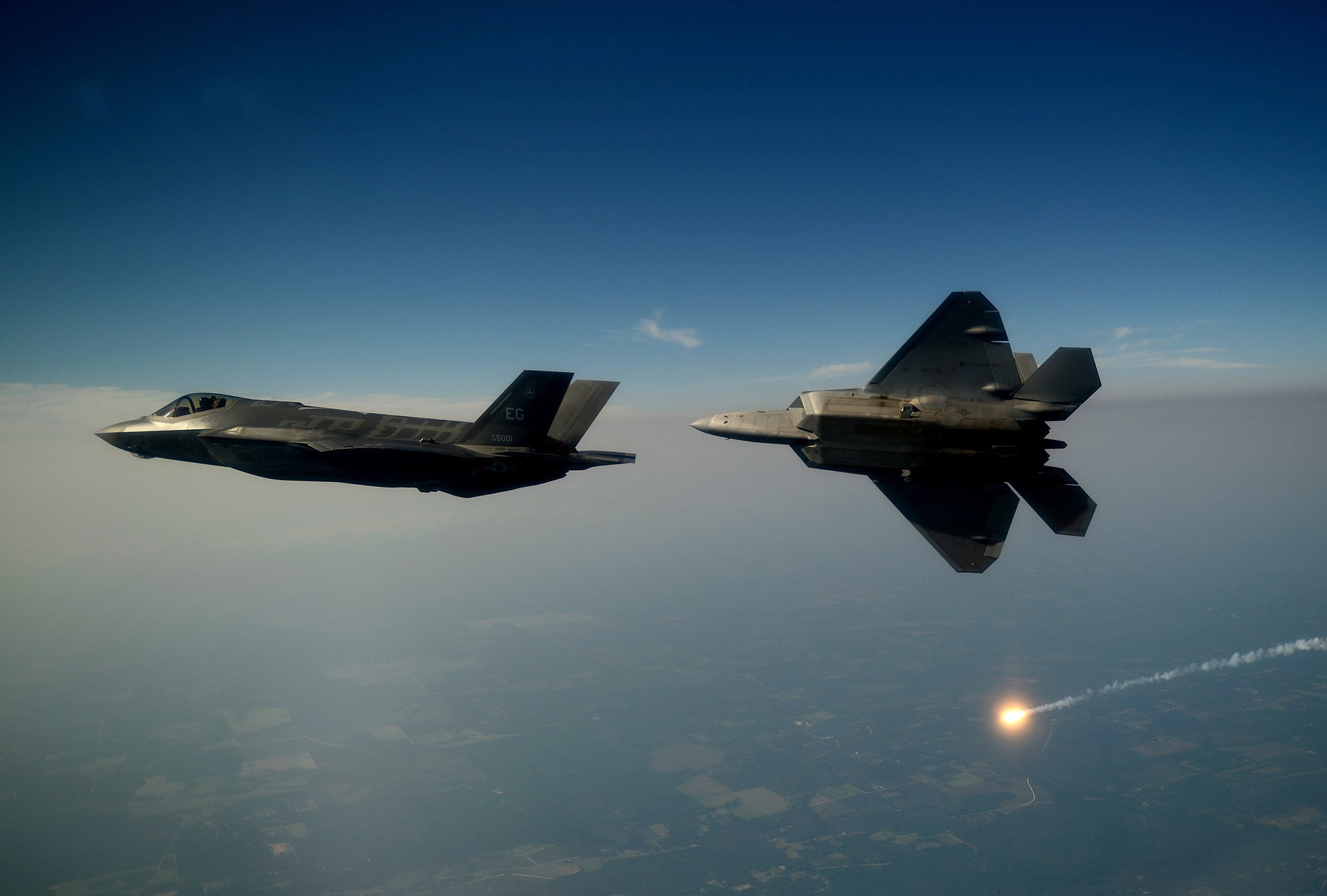WASHINGTON — The first field test of the U.S. Air Force’s experimental Advanced Battle Management System in December was a success, with about 26 out of 28 capabilities showing some semblance of functionality during a recent exercise, the service’s acquisition chief said Tuesday.
But the service will seek to be more ambitious during a second demonstration in April, which will focus on space and bring in elements from U.S. Space Command and U.S. Strategic Command, said Will Roper, the Air Force’s assistant secretary for acquisition, technology and logistics.
"I am thrilled to say that 26 out of 28 things work. That is too high of a success rate at this point in time, but I’ll take it. We should be taking more risk than that,” he told reporters during a roundtable.
The three-day test took place at Eglin Air Force Base, Florida, and involved a potential cruise missile attack on the United States simulated by QF-16 drones. Through the exercise, Air Force F-22 jets, Air Force and Navy F-35 fighters, the Navy destroyer Thomas Hudner, an Army unit equipped with the High Mobility Artillery Rocket System, as well as special operators shared data in real time in ways the services cannot currently do in an operational environment.
What will ABMS eventually look like? That’s still a mystery, even to the Air Force, which wants to test different solutions for connecting platforms, crunching data and sending it to other assets with the goal of eventually fielding what works and abandoning what doesn’t.
“We gave the team the goals of: Pull what you can together in three and a half months to see how far we can stretch, how quickly we could achieve something,” said Air Force chief architect Preston Dunlap, who manages the ABMS effort. “We were quite happy actually, even with 10 percent solutions.”
Here’s a rundown of some notable successes so far, as well as major failures:
The F-35 and F-22 were able to stealthily exchange data. Despite the two jets having advanced “sensor fusion” capabilities, the Air Force’s two most advanced fighters can’t really talk to each other. The F-35 uses the Multifunction Advanced Data Link, or MADL, to securely share sensitive information with other F-35s, while the F-22 has its own data link, the Intra-Flight Data Link, or IFDL.
Even using a non-stealthy connection to share information has its limitations: While the F-35 can both transmit and receive data via the Link 16, which meets NATO standards, the F-22 currently can only receive data.

However, the first ABMS test showed hopeful signs for fifth-generation fighter communication. The demonstration involved radio systems — built by F-35 prime contractor Lockheed Martin as well as Northrop Grumman, which manufactures key structures and mission systems for the aircraft, including MADL, Dunlap said. The demo also included Honeywell-made antennas built to speak across both MADL and IFDL, he added.
Those systems were integrated onto a ground based rig that “look[ed] like a big piece of hardware with radios on it,” according to Roper.
Then, the F-35 and F-22 flew over the system, exchanging data by bouncing it back-and-forth from the ground-based radios, Dunlap said.
He noted that the test verified that existing technology can be used to overcome three obstacles: translating the F-35’s MADL to the F-22’s IFDL; moving data across the different frequencies; and securing the communication.
"It was really herculean,” Dunlap said. "[The contractors] were excited by the speed of the acquisition team to get the ball going."
During the next ABMS demo in April, the Air Force plans to stretch the capability by putting the translation system inside the unmanned Kratos XQ-58 Valkyrie for flight-based testing.
“I also challenged the team to expand the amount of information translated between the different platforms so they can take advantage of new information on the displays,” Dunlap said.
An AC-130 gunship connected with SpaceX’s Starlink constellation. Although Dunlap did not provide much detail on this element of the exercise, he confirmed that the AC-130 was able to pass data through the constellation of small, high-bandwidth commercial internet satellites.
The Air Force has shown interest in connecting its platforms to commercial broadband satellites through its Global Lightning experiment. A demonstration with Starlink and the KC-135 tanker aircraft is in the works, and the service also plans to evaluate equipment from Iridium, OneWeb and L3Harris.

The Air Force created a cloud-based application for command and control. Typically, the service performs command and control from air operations centers — physical buildings where analysts sit in front of computers with specialized software that provides data from multiple assets, Dunlap said. Changes to software don’t necessarily happen automatically, and they may require assistance from information technology experts.
In the ABMS exercise, the Air Force demonstrated a cloud-based battle management and situational awareness application for the first time. It used a “CloudOne” system to host data up to the secret level, which will be a formative system underlying ABMS, Dunlap said.

Both Amazon and Microsoft are involved in standing up the CloudOne technology, but Roper said the Air Force could use the Joint Enterprise Defense Infrastructure contract vehicle for CloudOne if JEDI winner Microsoft provides better rates.
The robot dogs were a swing and a miss. U.S. Special Operations Command brought the robots that are capable of augmenting surveillance operations to the ABMS field test, but operators couldn’t figure out how to connect them with the other platforms involved in the exercise.
“We had some robot dogs — apparently those exist — that can go and do patrol. We were never able to patch their feeds in,” Roper said.
There’s hope for cybernetic canines becoming part of ABMS in the future though. Roper added that the ABMS team would be welcome to try to integrate the robots in future exercises.
Valerie Insinna is Defense News' air warfare reporter. She previously worked the Navy/congressional beats for Defense Daily, which followed almost three years as a staff writer for National Defense Magazine. Prior to that, she worked as an editorial assistant for the Tokyo Shimbun’s Washington bureau.





